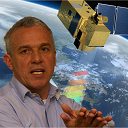Advances in Remote Sensing of Agriculture
A special issue of Remote Sensing (ISSN 2072-4292).
Deadline for manuscript submissions: closed (30 November 2012) | Viewed by 226809
Special Issue Editor
Interests: remote sensing of vegetation with focus on time series analysis and use of physically based radiative transfer models for mapping biochemical and biophysical traits
Special Issues, Collections and Topics in MDPI journals
Special Issue Information
Dear Colleagues,
The regular and timely monitoring of agricultural resources at regional to local scale is vital for economic and environmental purposes, as well as for appropriate response to food security issues at global scale. Remote sensing has shown a high potential to provide valuable information regarding the extent, status and management of agricultural land at various spatial and temporal scales.
With this special issue we compile state-of-the-art research that specifically addresses various aspects of the agricultural systems: national to global monitoring activities, crop area estimates and yield predictions, retrieval of crop biophysical characteristics, data assimilation in mechanistic crop growth models, application of remote sensing in precision agriculture (e.g., irrigation water management, fertilization). Review contributions are welcomed as well as papers describing new measurement concepts/sensors.
Prof. Clement Atzberger
Guest Editor
Keywords
- Cropland area & crop identification
- Yield & production forecasts
- Global food security & early warning systems
- Crop functioning & remote sensing data assimilation
- Crop biophysical variables & crop status
- Agricultural water management
- Precision agriculture
- Cropping patterns





